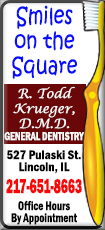|
 Researchers found that neck and shoulder muscles were up to 26
percent weaker in people with regular tension headaches, compared to
those without. They also saw strength imbalances between sets of
muscles that hold the head straight. Researchers found that neck and shoulder muscles were up to 26
percent weaker in people with regular tension headaches, compared to
those without. They also saw strength imbalances between sets of
muscles that hold the head straight.
“In order to be able to treat tension-type headache patients
non-pharmacologically . . . It is very important to work towards a
further understanding of muscle-skeletal impact on tension-type
headaches,” lead author Bjarne H. Madsen, a physiotherapist at the
Danish Headache Center in Glostrup, said by email.
Previous studies have found that muscle strength and weakness were
associated with tension-type headaches, Madsen and his colleagues
note in the journal Cephalalgia. More work is needed to determine
whether the muscle weakness is a cause or effect of this most common
type of headache, they write.
People with tension-type headaches may feel like they have a tight
band wrapped around their head but with less pain than is felt from
cluster headaches or migraines, which tend to strike one side of the
head. Cluster headaches are often accompanied by sinus congestion or
runny nose, while migraines cause throbbing, moderate-to-severe pain
and sometimes nausea and/or vomiting and sensitivity to light and
sound.

The study compared 60 adults with tension headaches to 30 healthy
individuals. The patients had experienced a headache on eight or
more days out of 30, with no more than three migraines.
The participants’ neck extensor muscles were tested when they leaned
their heads back. Neck flexor muscles were tested when they bent
their heads forward. The strength of the trapezius muscle running
down the back of the neck into the shoulder was also tested.
The healthy people in the study had 26 percent stronger neck
extension than those with tension-type headaches, but there was only
a slight difference between groups in neck flexor strength. As a
result, the ratio of extension and flexion strength was 12 percent
larger in the healthy comparison group.
Madsen, who is also a doctoral student at the University of Southern
Denmark, noted that when neck extension muscles were weaker, flexor
muscles were stronger, which could be pulling their heads forward.
The healthy people also had more shoulder strength when they raised
each arm out to the side.
Madsen said past studies have suggested that forward leaning head
posture and weaker neck extension might be contributing to tension
headaches.
[to top of second column] |

“Also, the use of computers, laptops and tablets have increased in
recent years and this may increase the time sitting with a protruded
head posture,” he said, adding that shoulder strengthening exercises
had helped to reduce neck pain in previous studies.
“What is interesting is that there appears to be this mechanical and
strength issue in people who have significant tension-type
headaches,” said Dr. Merle Diamond, who heads the Diamond Headache
Inpatient Unit at Presence Saint Joseph Hospital in Chicago, and was
not involved in the study.
Neck pain and tenderness is a frequent complaint among these
patients, she said, but doctors have not really understood the
mechanism at work.
Diamond said patients with tension headaches are sometimes horseback
riders, dental hygienists or physical laborers, whose repetitive
motions at work might lead to the muscle problems.
“If you do a repetitive motion or you’re lifting things, you’re
going to build certain muscles and not others,” said Diamond, who
also heads a Chicago headache clinic not affiliated with the
hospital.
Diamond typically suggests that patients work with a physical
therapist or trainer to strengthen their core. “I know that’s very
trendy but there’s a reason for it, it actually works,” she said.
The therapist checks the posture and works on any imbalance, giving
individuals exercises to do at home.
While there are analgesics, nerve blocks and trigger point
injections that can help with neck problems, Diamond noted that many
patients prefer non-drug methods.

“If you work on these different pieces, you can probably limit the
amount of exposure you need to get from analgesics,” Diamond said.
“It’s great that we have them but having a good physical response
doing some of your own work on this can be helpful.”
SOURCE: http://bit.ly/1EUGI6j Cephalalgia, online April 1, 2015.
[© 2015 Thomson Reuters. All rights
reserved.] Copyright 2015 Reuters. All rights reserved. This material may not be published,
broadcast, rewritten or redistributed. |